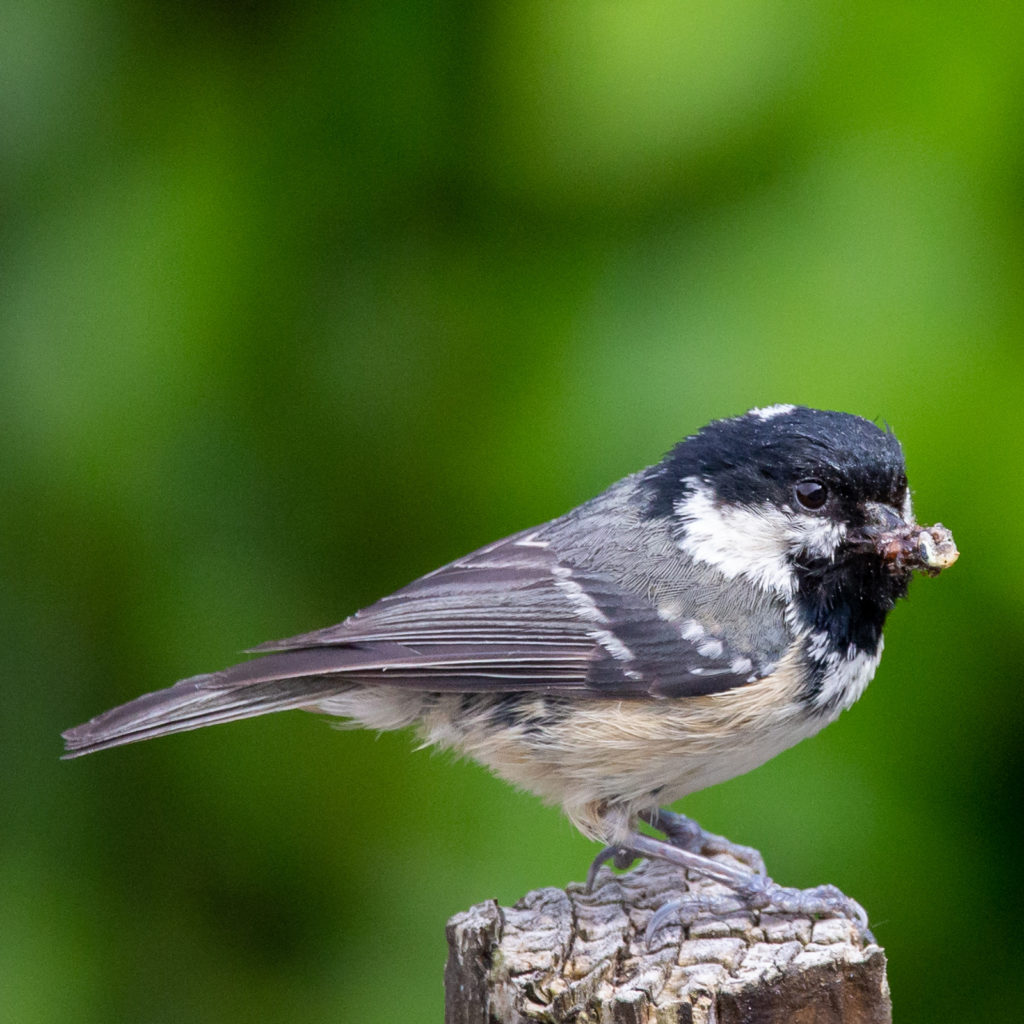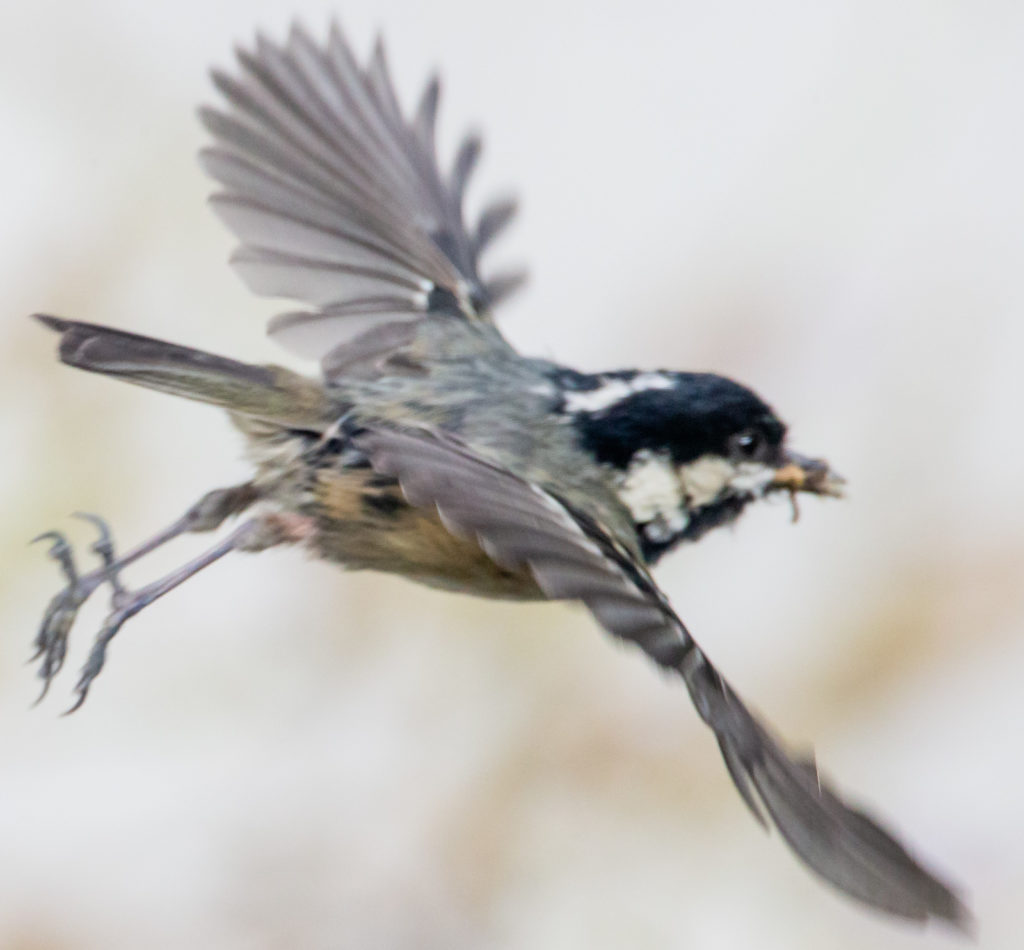I did something with my camera the other day for the very first time. I set it up to take time-lapse photographs over a period of just under fours hours. The subject was a pair of Coal Tits nesting in our kitchen flue. The law, including the Wildlife Act (1976) mandates a special licence from the National Parks and Wildlife Service in order to photograph an active nest. I would not be photographing the nest but I would be photographing the opening to it. So, just to be sure, I carefully avoided any disturbance to the birds by setting up the camera many metres from the opening of the flue.

600 mm 1/1000s f/10 ISO 3200 
600 mm 1/2500s f/9 ISO 3200
I chose my Fuji XT3 as the camera because it has an electronic shutter and I set it to silent operation to minimise any potential disturbances.
I was mounting the camera on a tripod anyway and I set that up many metres from the back wall of the house. I selected a Canon 70-200 mm lens which is designed for full frame sensors and becomes 1.6 times bigger when mounted on the smaller Fuji sensor. So the images would photographed at the equivalent of 320 mm.
Mounting a Canon lens on a Fuji body requires an adaptor and my Photodiox Pro Shift EOS-FX(RF) adaptor, though excellent, has no pass through electronics. Thus there could be no electronic control of the aperture; the widest aperture of f/2.8 would be used by default.
The back of the house is north facing and there is no direct sunlight. The deep shade f/2.8 should be fine. Except the depth of field would only be 2 cm. Maintaining a bird in focus, no matter how small, would be a challenge, a hit or miss.
These restrictions are quite a challenge when coupled with the speed these little birds move at. Freezing the action was going to require 1/8000 s in deep shade. I had done an experiment a few days earlier from 15 metres with a 960 mm lens and learned that 1/4000 s wasn’t fast enough to freeze the action. A few tests at 1/8000 and 1/10,000 s worked quite well so that decided me on 1/8000 s.
To best manage the scene’s luminance, with the restricted light and a fast shutter speed, there is only the one variable left: the sensor’s sensitivity to light or ISO. That’s the noise level and I’d have to deal with that in post-processing in Lightroom.
To save memory, I saved the images as square JPGs (each 7.8 Mb) rather than RAW sensor readings (30 Mb) for later development. I’d have no problems storing 4 hours of photographs.
So I set the camera up some 4 metres from the entrance to the flue, hidden in a wisteria plant. Once I focussed as best I could, I set the ISO to range between 800 and 3200 as the light changed.
Then I set the intervalometer to take a photograph every second while I went socially-distant shopping. I had to choose a second as the shooting interval because the two parent birds make about twenty sorties per hour between them and each delivery of food takes about a second. They are quick getting in and out of the flue not least because there are attentive predators lurking all about.
I removed the camera after nearly 4 hours and it took me about 30 minutes to review all 14,161 exposures. No more than thirty had birds in the frame. And thankfully, there were three I could use. 14,161 / 8000 s isn’t a lot of time. I expected a few more photos but I was content to see the insects that they carried. What more could I have expected from 1.77 seconds of bird watching in the space just 2 cm in front of the flue?
320 mm 1/8000s f/2.8 ISO 1600




Leave a Reply